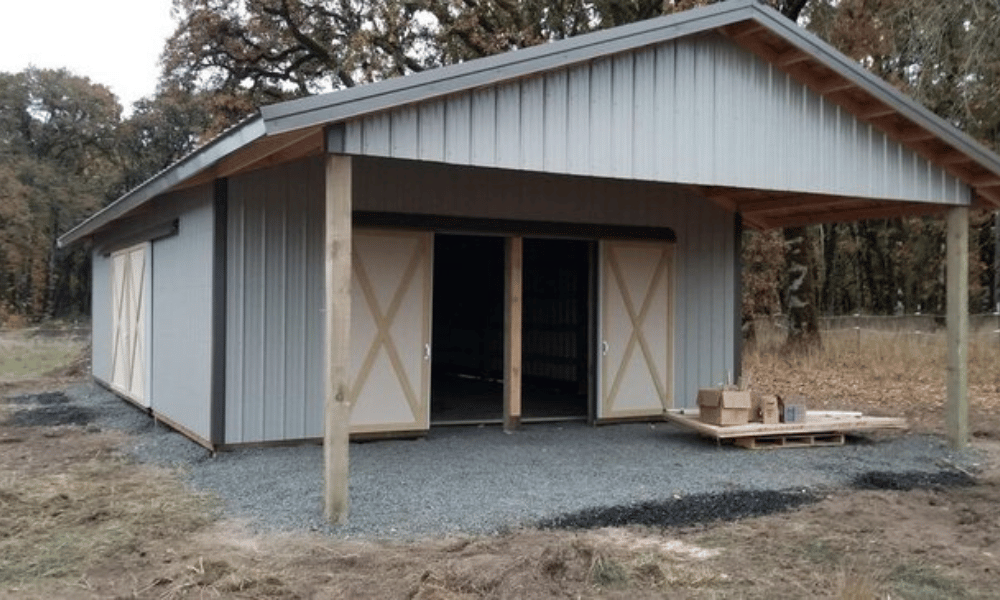When it comes to constructing a pole barn garage, one of the most frequently asked questions is, “How big should your pole barn garage be?” The size you choose can significantly influence not only the functionality of the space but also its overall cost and aesthetic appeal. In this comprehensive guide, we'll explore various aspects that will help you determine the ideal dimensions for your pole barn garage. From personal needs to local regulations, we’ll cover all the key considerations you should keep in mind.
Understanding Pole Barn Garages
Before diving into size specifications, it's crucial to understand what a pole barn garage entails. A pole barn is a type of building that uses poles or posts as its primary support structure, often featuring a large open space. This design allows for flexibility in use—whether you're looking to store vehicles, tools, or create a workshop.
What Makes Pole Barn Garages Unique?
Pole barns are unique because they offer:
- Cost-Effectiveness: Generally cheaper than traditional garages. Flexibility in Design: Can be easily customized based on your needs. Durability: Built to withstand harsh weather conditions.
How Big Should Your Pole Barn Garage Be? Key Considerations
Choosing the right dimensions for your pole barn garage is essential. Here are some key factors that will influence your decision:
1. Purpose of the Garage
Why is purpose important? Understanding what you plan to use your garage for will dictate its size. Are you storing just one vehicle? Or do you need space for multiple cars, a workshop, and storage?
2. Vehicle Storage Needs
If your primary goal is vehicle storage:
- Single Car: A standard single-car garage typically measures 12x20 feet or 14x24 feet. Two Cars: For two vehicles, consider dimensions like 24x24 feet or larger based on additional storage needs.
3. Workshop Space Requirements
Do you envision using your pole barn garage as a workshop?
- Ensure extra square footage for tools and workbenches. Ideally, allocate an additional 100-300 square feet depending on the complexity of projects.
4. Future Expansion Possibilities
Is expansion in your plans?
- Design with future growth in mind; consider leaving room for an extension later.
5. Local Building Codes and Regulations
Check local zoning laws and building codes:
- Are there restrictions on height or footprint?
6. Climate Considerations
Depending on where you live:
- In colder climates, larger doorways might be necessary.
Space Planning Tips for Your Pole Barn Garage
Proper planning ensures effective space utilization. Here are some useful tips:
1. Create a Layout Plan
Sketch out how you'll arrange items inside:
- Include designated areas for vehicles vs. tools.
2. Utilize Vertical Space
Consider overhead storage options:
- Shelves can maximize usable floor space.
Key Features to Include in Your Pole Barn Garage Design
As you decide on size, think about key features that might enhance functionality:
1. Insulation Needs
If you're working in extreme temperatures, insulation Pole Barn Garage Builders in Springfield will be crucial:
- Proper insulation maintains comfortable working conditions year-round.
2. Power Supply and Lighting Options
Install adequate electrical systems:
- Sufficient lighting enhances safety and usability.
Balancing Size with Budget Constraints
While it’s tempting to go big when designing your dream pole barn garage, budgetary constraints often come into play:
1. Cost Implications of Size Choices
Larger spaces mean higher material costs:
- Consider what fits comfortably within your financial limits.
2. Long-Term Value vs Initial Investment
A well-planned larger garage could yield better resale value:
- Weigh immediate costs against potential future returns.
Customizing Your Pole Barn Garage: Materials and Styles
Once you've settled on size considerations, think about materials and garage construction in Cottage Grove architectural styles:
1. Material Selection Based on Local Availability
Using locally sourced materials can reduce costs while supporting community businesses:
| Material | Pros | Cons | |-----------------|---------------------|--------------------| | Wood | Aesthetic appeal | Higher maintenance | | Metal | Durable | Less insulation | | Vinyl | Low upkeep | Appearance limitations|
2. Architectural Styles That Suit Your Needs
Choose from modern aesthetics to rustic designs based on personal taste:
FAQs About Pole Barn Garages
Here are some common questions surrounding pole barn garages:
1. What is the average cost per square foot for building a pole barn garage? The average cost ranges from $25 to $50 per square foot depending on materials and labor.
2. How much clearance do I need for oversized vehicles? Typically at least 12 feet of clearance is recommended.
3. Can I build my own pole barn garage? Yes! However, ensure compliance with local codes and safety regulations.
4. Do I need permits to build a pole barn garage? Most jurisdictions require permits; check with local authorities before beginning construction.
5. What types of doors are best suited for a pole barn garage? Roll-up doors provide easy access while saving space; sliding doors can also be effective depending on design.

6. How long does it take to build a typical pole barn garage? Construction time varies but generally ranges from 4 weeks to several months depending on size and complexity.
Conclusion
Determining how big your pole barn garage should be involves careful consideration of several factors including purpose, vehicle storage needs, future expansions, local regulations, climate considerations, budget constraints, and desired features or materials used in construction. Ultimately, this thoughtful process results in a functional space tailored specifically to meet your needs while adding value to your property over time.
In summary: take stock of what you'll use the space for now—and what you might want it for down the line! By doing so, you'll ensure that every square foot serves its purpose efficiently while providing ample room for creativity and functionality alike!